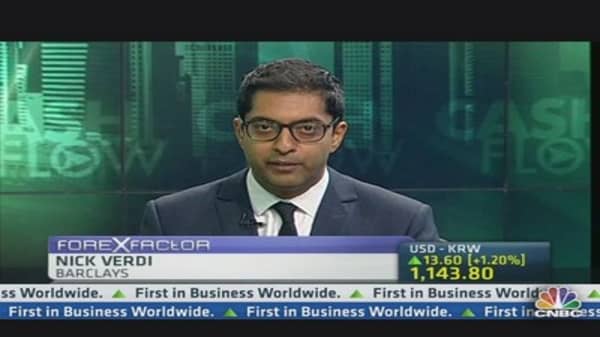The Australian dollar was served a double blow on Thursday, falling to its lowest level against the U.S. dollar since 2010, on concerns around the U.S. Federal Reserve scaling back the pace of stimulus and a downturn in key trading partner China's manufacturing sector.
And strategists expect the commodity currency, which is the second worst-performing this year after the Japanese yen, to head further south in the months to come.
"The Australian dollar was the poster child for G10 currencies – it offered safe haven status, leveraged to China and high yield. Now all of those 3 attributes have been dented somewhat," said Nick Verdi, director, FX strategy Asia Pacific ex-Japan at Barclays on Thursday.
(Read More: Why Shorting the Aussie Is 'Trade of the Century')
"It is a lot less appealing to international investors. We think the Aussie could head further south," Verdi said, adding that he expects the currency to hit 86 U.S. cents against the dollar by mid-2014, from 92.24 cents currently.
A mix of falling commodity prices alongside a slowdown in the economy of Australia's largest trading partner China– reflected in the worse-than-expected reading for the HSBC flash China Purchasing Manager's Index (PMI) for June – have dampened the attractiveness of the Aussie.
In addition, with the Reserve Bank of Australia in the middle of a rate cutting cycle, the currency is no longer as appealing from a carry trade perspective.
The RBA's move to cut interest rates from a peak of 4.75 percent in 2011 to 2.75 percent currently, has narrowed the interest rate spread between the Australian dollar and the main funding currencies of the carry trade, the U.S. dollar and Japanese yen.





